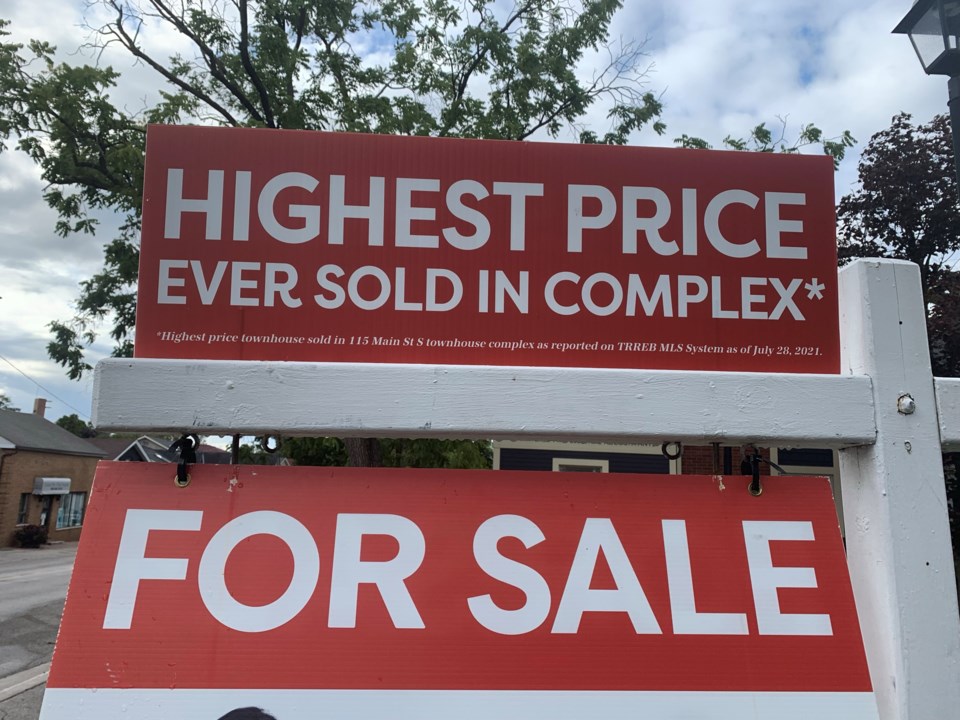The real estate market in York Region remains hot in 2021, with prices and sales continuing to climb, and here are five newsmakers to reflect this year’s trend.
Imbalance between supply and demand
The latest data from the Toronto Regional Real Estate Board shows that home sales reached a record for the month of November and the average selling price also reached an all-time high. New listings were down substantially compared to last year for all market segments — further highlighting the inherent supply issue in the Greater Toronto Area, including York Region.
Number of sales in York Region reached 1,583 in November, which is up 36.1 per cent from the same time last year. Meanwhile the number of new listings was 1,796, a decrease of 11.6 per cent compared to 2020.
According to Re/Max’s housing market report, home sales are expected to rise and factors like decreasing inventory and new listings, increasing immigration and domestic demands will continue to exacerbate the imbalance between the supply and demand.
Bidding war is normal
Due to the substantial insufficiency of supply to demand, bully offers and bidding wars are commonplace in the current market.
“Homes sales this year often receive double-digit offers,” said Yinan Xia, broker and managing partner of Bay Street Group in Markham. “In some extreme cases, our team received up to 80 offers for a single property.”
Xia analyzed and pointed out that COVID-19 hit the hotel and retail industries hard, which investors used to be enthusiastic about. As a result, people turned their attention to residential housing, bringing together a wide variety of buyers and fierce competition.
People flock into remote areas
The pandemic has completely changed the way people work and live. “More transit options and hybrid work schedules have made relocation to the city’s outlying areas more attractive,” said Christopher Alexander, senior vice-president of Re/Max. The beneficiaries of the trend have been suburban communities, including the most northern part of York Region.
Statistics show that East Gwillimbury home sales jumped 145.3 per cent to 444 units in the first half of year of 2021, compared to 181-unit sales during the same period in 2020 while Georgina climbed 90.4 per cent, from 710 to 373.
Recreational property is the new favourite
Vacation properties are getting more valuable and popular, especially for families who work remotely and have children at home. Except for affordability, proximity to water or waterfront, space and comfort, amenities and good Wi-Fi remain the top buying criteria for people in the market for a recreational property.
For York Region, the rising heat of Wilcox lakeside homes in Richmond Hill is a good proof of this trend.
“Two cottages facing the lake, the price of a four-bedroom house in July 2020 was only 2.16 million; however, in September 2021, the one with only two bedrooms sold for two million,” Tommy Hua, salesperson from Real Land Realty Inc., illustrated by example.
Vacant homes tax considered in York Region
The region is considering vacant land tax to dampen speculative activities and help release more housing units, but Jason Mercer, chief market analyst of TRREB, doubts that will make a substantive difference as the most fundamental issue is the problem of supply and demand instead of speculation.
Re/Max looked at over 5,000 individual freehold transactions in the GTA between March 2019 and March 2021. Aurora was one of the six neighbourhoods that saw less than two per cent of sales repeated in that period — leading to the conclusion that speculators are not a significant factor driving the current market and rising prices.
TRREB president Kevin Crigger agreed with Mercer and insisted that governments at all levels must take coordinated action to increase supply. “Unless governments work together to cut red tape, streamline the approval processes, and incentivize mid-density housing, ongoing housing affordability challenges will escalate.”
Scarlett Liu is a federally funded Local Journalism Initiative Reporter at Economist & Sun



